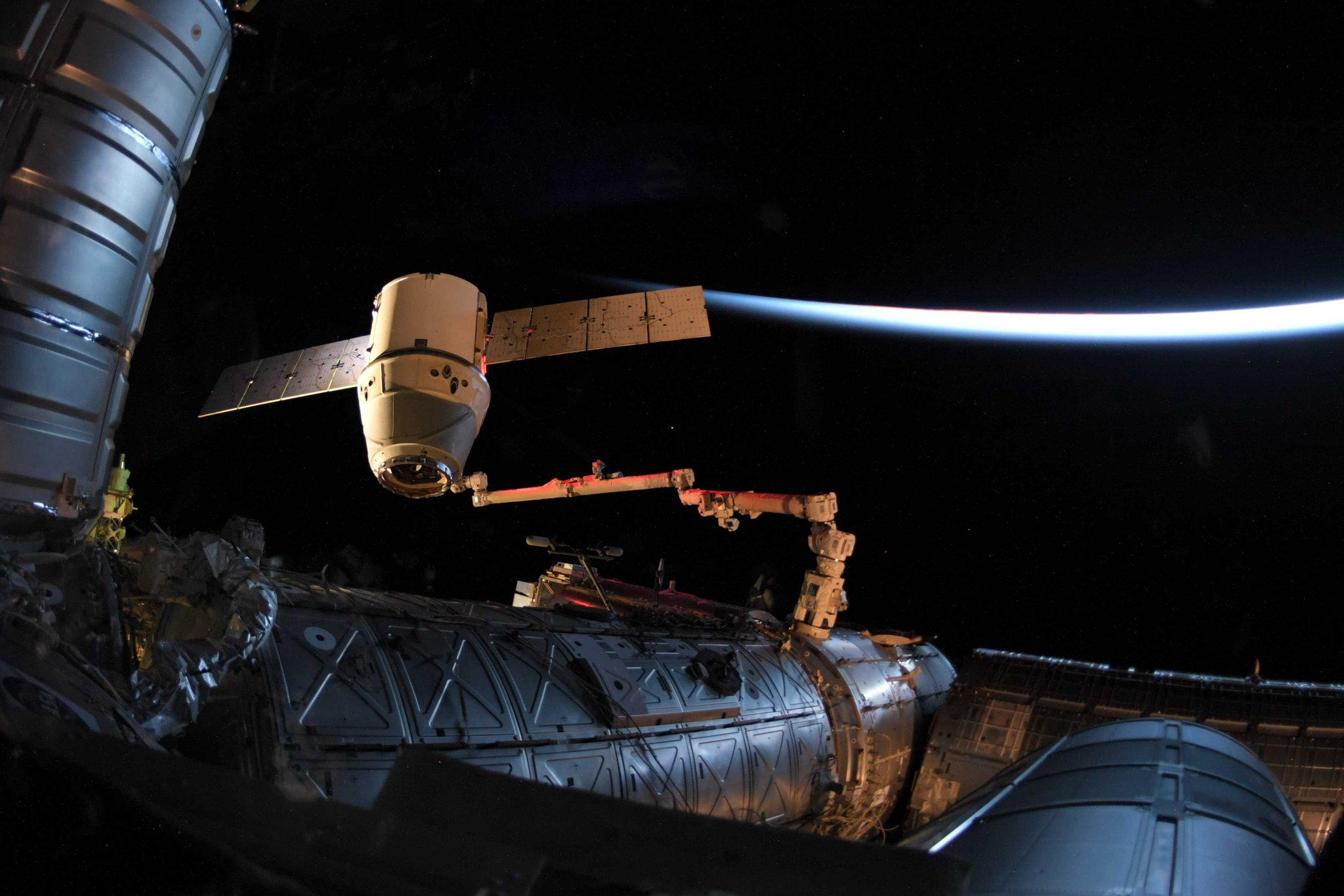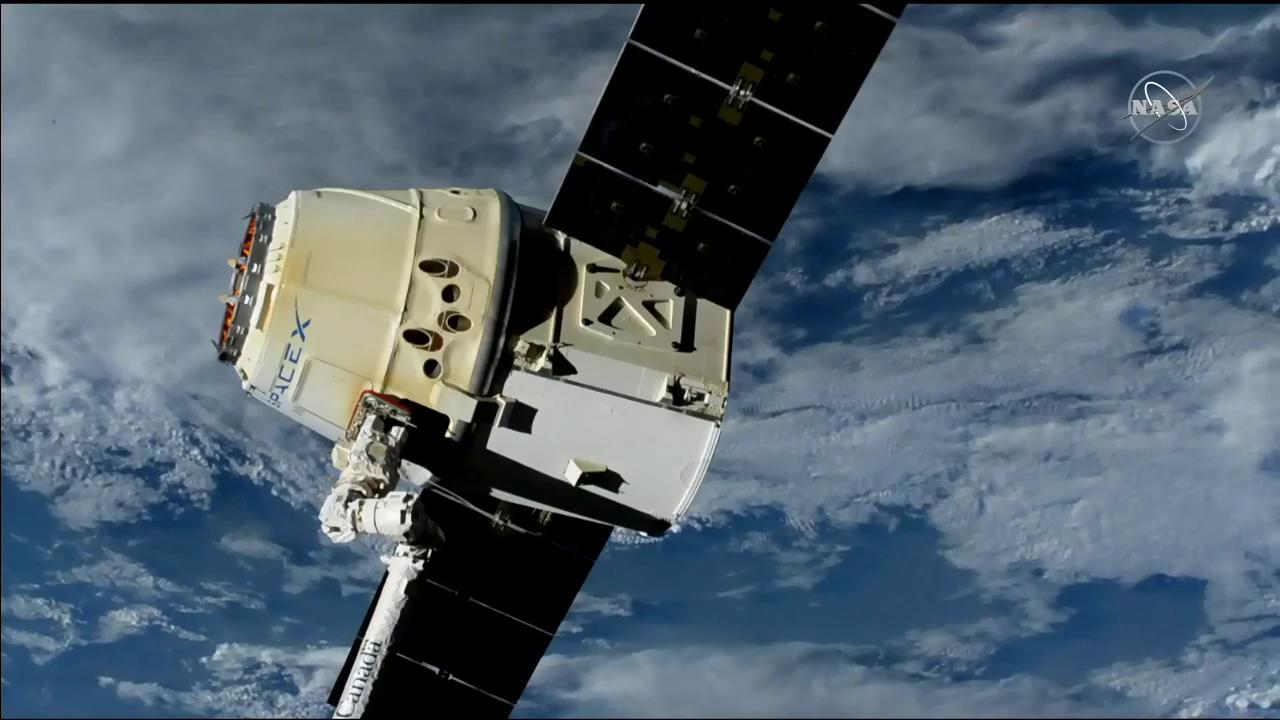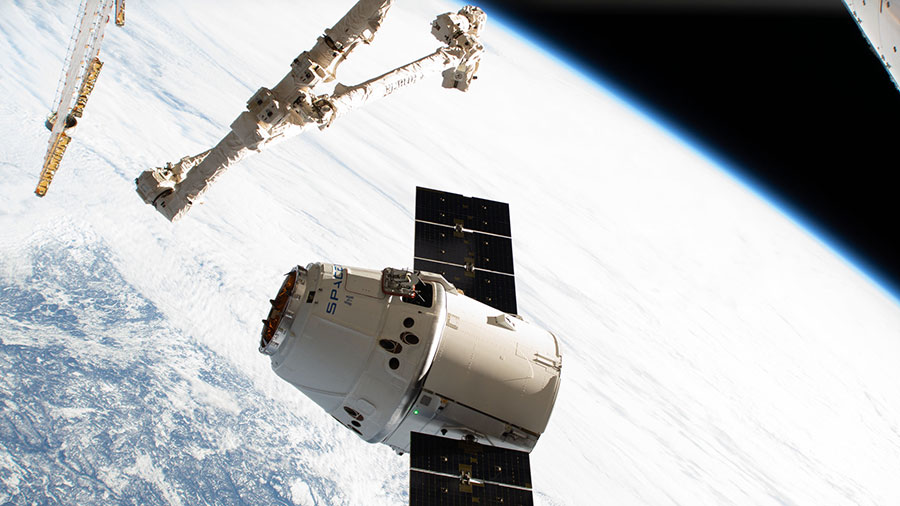Dragon Completes Cargo Return Mission with Splashdown in Pacific

SpaceX‘s Dragon cargo spacecraft splashed down in the Pacific Ocean at 5:48 p.m. EDT (2:48 p.m PDT), approximately 202 miles southwest of Long Beach, California, marking the end of the company’s 17th contracted cargo resupply mission to the International Space Station for NASA. The spacecraft returned more than 4,200 pounds of valuable scientific experiments and other cargo.
Some of the scientific investigations Dragon returned to Earth include:
Observing Protein Crystal Growth
NASA’s Biophysics-6 experiment looks at the growth of two proteins of interest in cancer treatment and radiation protection. Scientists are using ground-based predictions and in-space X-ray crystallography to determine which proteins benefit from crystallization in microgravity, where some proteins can grow larger and with fewer imperfections.
Microalgae Biosynthesis in Microgravity
Microalgae Biosynthesis in Microgravity (MicroAlgae) studies the effects of microgravity on Haematococcus pluvialis, an algae capable of producing a powerful antioxidant, astaxanthin. It could provide a readily available dietary supplement to promote astronaut health on long-duration space exploration missions. A community college student and alumnae of the NASA Community College Aerospace Scholars (NCAS) program proposed the research, and NCAS is engaging community colleges across the U.S. to conduct ground studies for comparison to the in-orbit investigation.
Genes in Space
On May 23, astronauts aboard the space station successfully edited DNA using CRISPR/Cas9 technology for the first time in space, working on the Genes in Space-6 investigation. This milestone advances understanding of how DNA repair mechanisms function in space and supports better safeguards to protect space explorers from DNA damage. Genetic damage caused by cosmic radiation poses a serious risk to space travelers, especially those on long-duration missions to the Moon and Mars. CRISPR/Cas9 now joins a growing portfolio of molecular biology techniques available on the ISS National Lab.
These are just a few of the hundreds of investigations aimed at keeping astronauts healthy during space travel and demonstrating technologies for future human and robotic exploration beyond low-Earth orbit, including missions to the Moon by 2024 and on to Mars. Space station research also provides opportunities for other U.S. government agencies, private industry, and academic and research institutions to conduct microgravity research that leads to new technologies, medical treatments, and products that improve life on Earth.
For more than 18 years, humans have lived and worked continuously aboard the International Space Station, advancing scientific knowledge and demonstrating new technologies, making research breakthroughs not possible on Earth that will enable long-duration human and robotic exploration into deep space. A global endeavor, more than 230 people from 18 countries have visited the unique microgravity laboratory that has hosted more than 2,500 research investigations from researchers in 106 countries.
Learn more about station activities by following the space station blog, @space_station and @ISS_Research on Twitter as well as the ISS Facebook and ISS Instagram accounts.
Mark Garcia
Powered by WPeMatico








